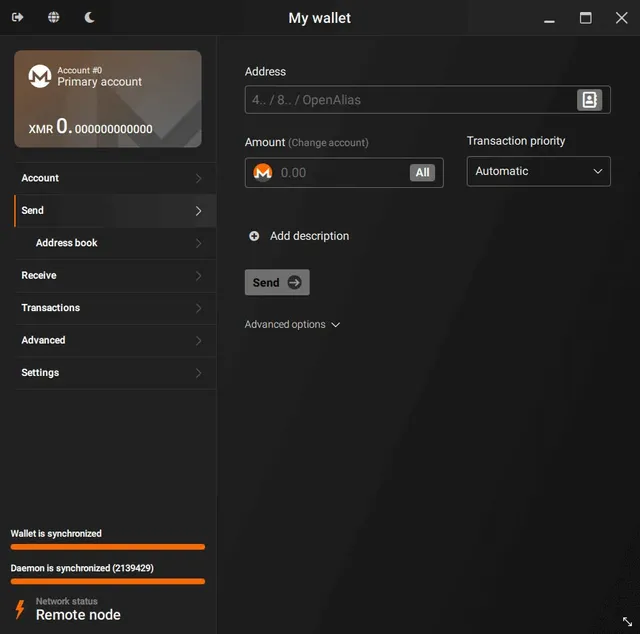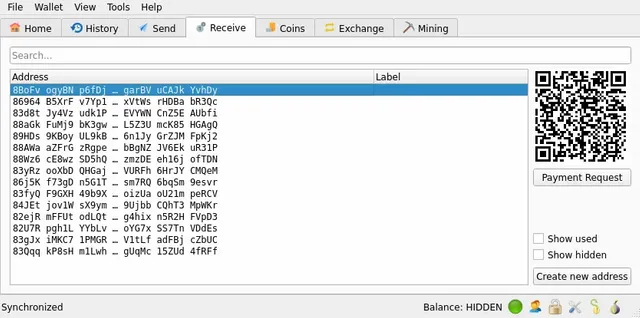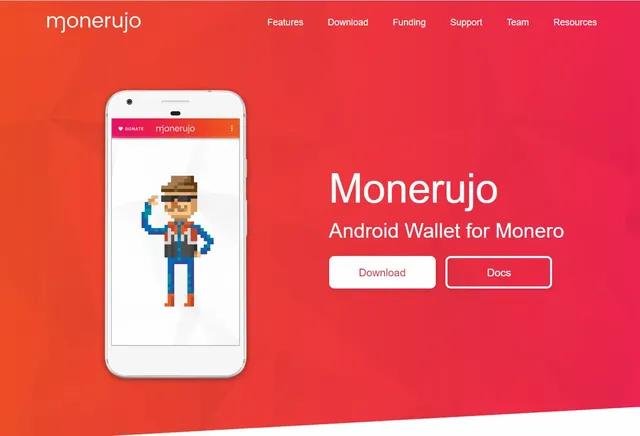The Monero (XMR) cryptocurrency and its privacy potential
Both the user who sends XMR tokens, the recipient who receives them and the amount of each transaction, are completely private data
Monero (XMR) is a leading cryptocurrency focused on private and censorship-resistant transactions. It is the fifth largest proof-of-work (PoW) cryptocurrency by market capitalization. Most cryptocurrencies out there, including Bitcoin, are public blockchains. That means they have public data, as a function of transparency. This means that all transactions can be verified or tracked by anyone through block explorers.

If someone knows a person's Bitcoin address, they will be able to track their transactions through the block explorers. The cryptocurrency, Monero (XMR), uses a different privacy-enhancing technology to secure users' transactions. With this cryptocurrency, there is no alternative to total transparency. It is the only blockchain where all users are anonymous by default.
Monero (XMR) cryptocurrency and privacy
Both the user sending XMR tokens, the recipient receiving them, and the amount of each transaction are completely private data. It uses technologies such as Stealth Adresses, Ring Signatures and RingCT. No XMR transaction can be traced. This feature makes Monero (XMR), a fully fungible cryptocurrency. The creators consider it as electronic cash that enables fast and inexpensive payments.
Monero (XMR) is a decentralized cryptocurrency, which does not have a company to run it or a director. All development is built by volunteers or contributors, it is funded by the same community that dedicates their time to this blockchain. There are many working groups within its platform to collaborate in various areas.

Monero's RandomX algorithm
It is different from other cryptocurrencies because it does not have a fixed block size, but dynamic. Also, its commissions are dynamic and its proof of work is resistant to ASIC technology. It is capable of processing 1,000 transactions per second with high throughput. Each transaction takes at least two minutes to confirm and add a new block. With at least three validations, it is enough to take the transaction as secure. The commission cost of a transaction is at least $0.05, which makes it one of the cheapest.
The consensus technology is based on an algorithm called RandomX. It is a proof-of-work developed by collaborators of the cryptocurrency Monero (XMR). It was adopted since version 0.15. This proof-of-work algorithm is optimized for CPU, and not for ASIC. It is based on the execution of random code and other memory-intensive techniques. The goal of Monero is to discourage the use of specialized hardware for mining because of the high costs. The use of RandomX allows for much more decentralized mining and a more equal distribution of rewards, per block built.
RandomX has two different modes of memory and performance requirements. Fast, it requires 2Gb of shared memory, but has four to six times the performance of the light mode, which only requires 256 MB Ram.
Keys to the cryptocurrency Monero (XMR)
The use of Monero depends on hidden addresses. These are an important part of the privacy inherent in this cryptocurrency. They allow, and require, the sender to create random, unique addresses for each transaction. The recipient can publish only one address, but can have all their incoming payments go to hidden addresses. These addresses cannot be linked to the recipient's published address or to the addresses of other transactions.
When you create a Monero (XMR) account you get a private view key, a private spending key and a public address. The spending key is used to send payments and the view key is used to show incoming transactions destined for the account and the address to receive payments. Both the spending key and the view key are used to create the XMR address. Not to be confused with a mixer, as their processes are not interactive.
The user can decide who can see their balance in their wallet by sharing their view key. This makes this cryptocurrency private by default, but it is optionally semi-transparent, with eta view key function. To receive monero tokens, you simply provide the sender with a public address. The addresses for receiving or sending XMR tokens consist of 95 characters. They start with the number 8.

Security
Although the developers talk about privacy not being totally anonymous, it can still fail on that proposition. XMR may have some flaws in that regard, even if there may be some way to infer information through Monero's privacy layers. Developers posit that cyberattacks are becoming much more accurate and effective
The issuance of Monero (XMR)
The cryptocurrency, Monero (XMR), has a fixed issuance rate. There is no set maximum supply. Since May 2022, the issuance of XMR started to reduce and remains permanently at 0.3 tokens per minutes or 0.6 tokens per block. This means 1% inflation for the first year and approaching 0% inflation in future years.
The wallets
Lightweight or full node wallets can also be used with this cryptocurrency. The developer team created its own wallets. There are also others created by third parties with open source, for desktop and mobile devices. The types of wallets for managing XMR can be simple mode and advanced mode. The simple mode is created for less technical users who just want to use monero in the easiest and fastest way possible. It is fully compatible with Trezor and Ledger hardware wallets.
You can choose to use wallets without downloading the blockchain and connect to remote nodes to validate transactions. The full node wallet requires hard disk space to download the blockchain database.